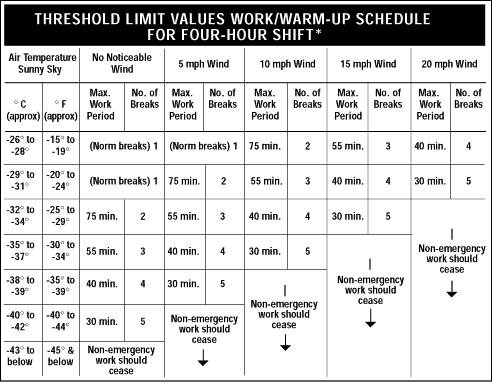Most of us have heard of cold-related illnesses such as frostbite, hypothermia, chilblains, and trench foot. All are illnesses related to cold stress. But the cold is insidious and works its way deep into the body where it indirectly causes cold-related problems.
Workers with chronic diseases such as asthma or arthritis are more likely to suffer flare-ups in cold weather.
Cold stress also decreases the worker’s dexterity, coordination, mental skills, and causes an overall decline in performance that negatively affects worker safety. Workers are more prone to accidents.
Also, working in the cold increases the likelihood of employee sprains and strains. This turns up as a health issue such as a low back strain. However, all muscles and tendons have less resistance to harm when exposed to cold weather.
What is Cold Stress?
Cold stress is the way your body responds cold temperatures stemming from heat escaping from part of your body, such as hands, limbs, feet, and/or head. When the body has prolonged contact with cold, lengthy exposure is a physical and mental challenge to your body.
Humans lose heat four ways:
•Radiation
•Convection
•Conduction
•Evaporation
The best way to avoid cold weather stress leading to cold weather illness or injury involves changing work habits and wearing the right clothing.
Changing Work Habits
How long an employee works in cold weather depends on wind and air temperature. The colder the temperature and the stronger the wind, the shorter work periods are. The following table, adopted by the American Conference of Governmental Industrial Hygienists (ACGIH) as Threshold Limit Values (TLVs) for cold stress is an excellent guide for management in establishing the length of a work period.

*Source: Adapted from Threshold Limit Values (TLV) and Biological Exposure Indices (BEI)
When workers are continuously exposed to below freezing temperatures shelters for warming such as heated tents, trailers or restrooms are in order for management to offer.
•Layer your clothing for better protection than one single heavy garment.•Wear thermal underwear made of polyester or polypropylene to wick away sweat.•The layers over the thermals should give you adequate insulation for the weather you are working in and be easily removed if you begin sweating too much. Your outer jacket should have a way to seal off the cuffs, waist, and neck. These seals should open easily if you become warm.•If there is rain or snow, make sure your outerwear is waterproof•Make sure to wear a watch cap or full ski mask – 50 percent of body heat is lost from your head.•Keep clothing clean since dirt infiltrates clothing fibers and ruins its ability to insulate.•Cover your hands with waterproof covering if the weather is wet. For very cold weather consider mittens.•Footwear made with rubber bottoms, leather uppers, and removable felt insoles are best for working in cold weather. Layer your socks using one pair of thin socks as the inner layer made of nylon, thin wool, or silk. Avoid cotton as it absorbs more water and does not wick away sweat. For the top layer wear a thicker sock. Bring several pairs of socks with you while working in the cold.•If you need face or eye protection make sure that the eye protection is separate from the nose and mouth protection. A single unit will cause the protection to fog us and blind you temporarily.





